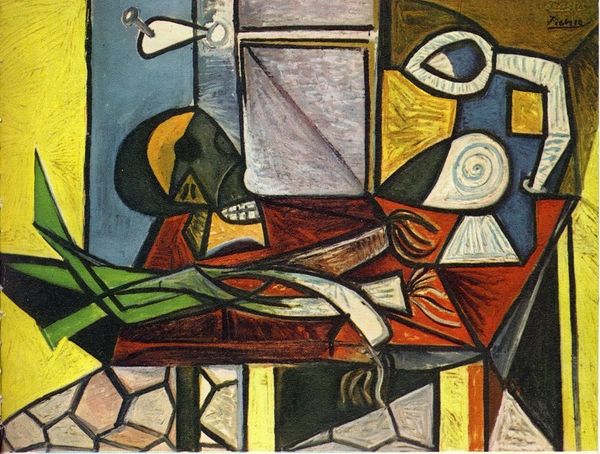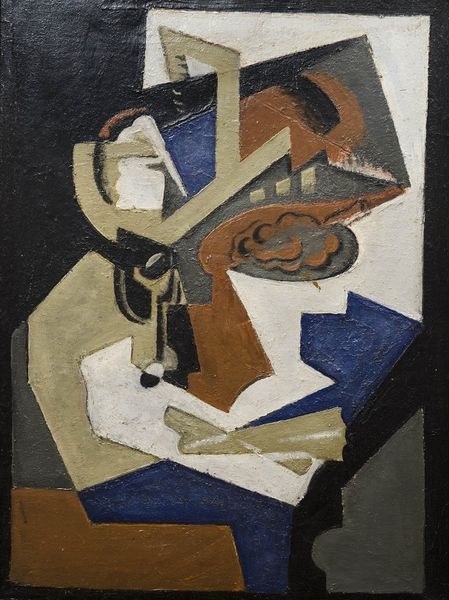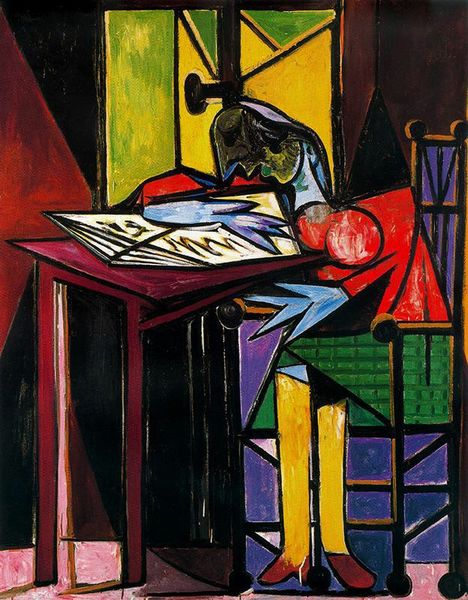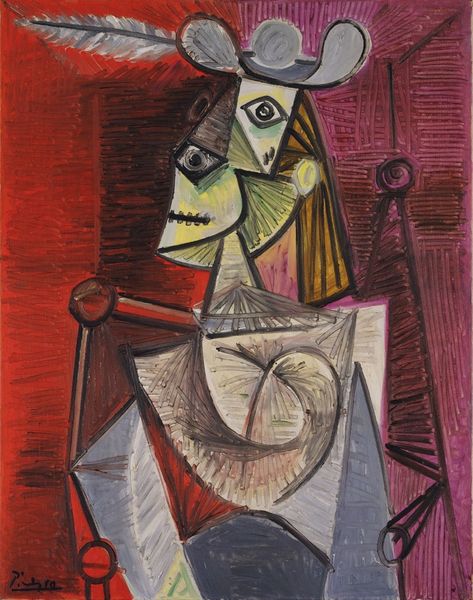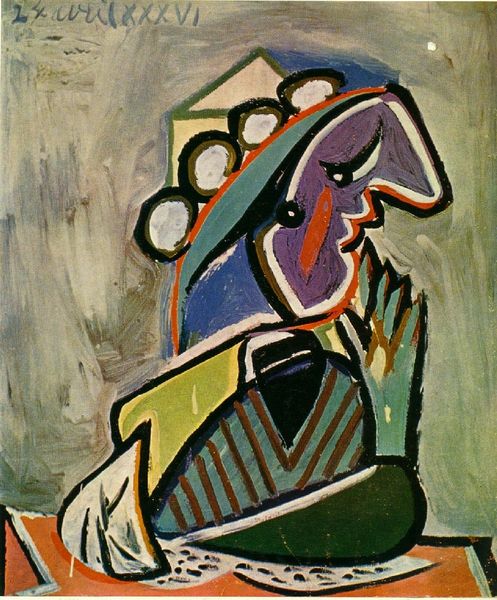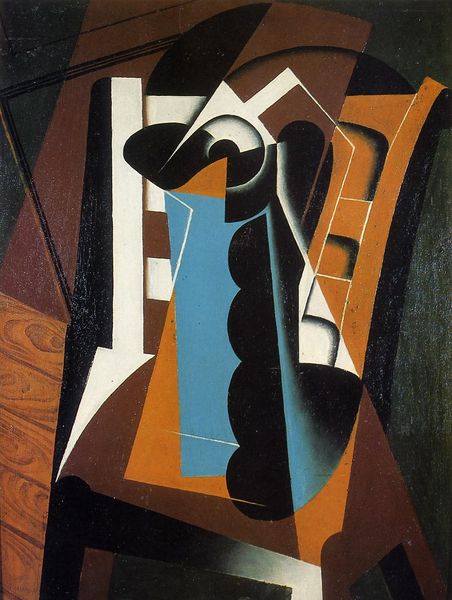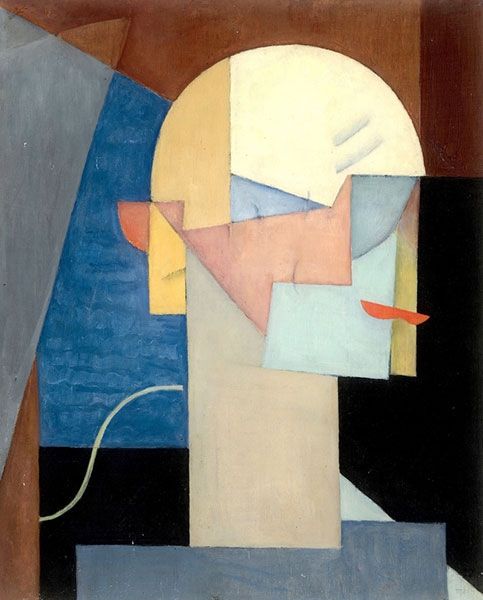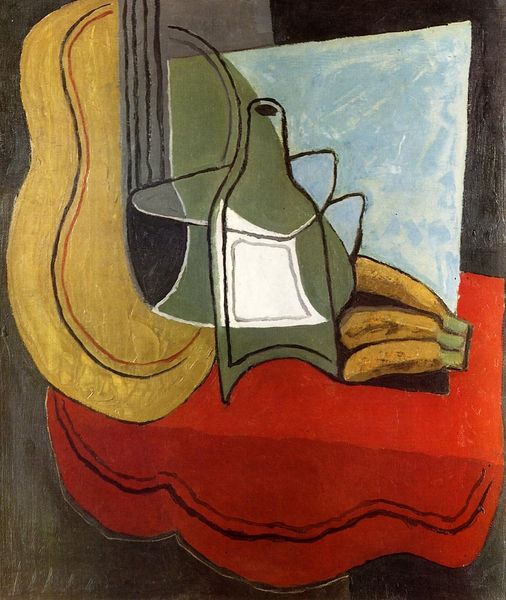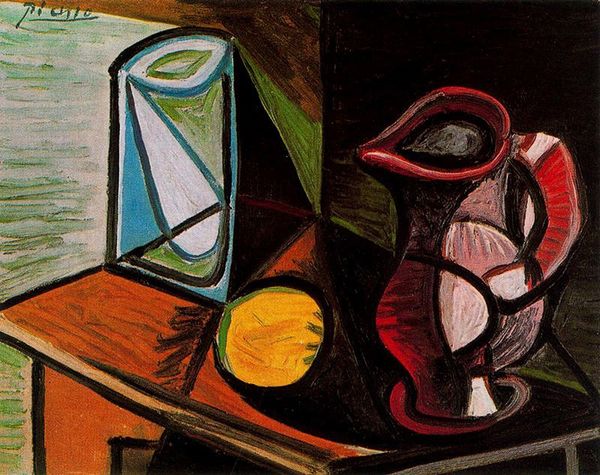
#
abstract painting
#
graffiti art
#
street art
#
pop art
#
mural art
#
acrylic on canvas
#
street graffiti
#
spray can art
#
urban art
#
portrait art
Copyright: Oscar Dominguez,Fair Use
Editor: So, this is Oscar Dominguez’s “La Máquina de Coser,” painted in 1943, using acrylic on canvas. It’s a captivating piece, I think; almost domestic but somehow fractured. What strikes you most about this work? Curator: The choice of a sewing machine during wartime, painted by a surrealist artist who fled to France, speaks volumes. How do you interpret the fractured quality of the composition? Is it simply aesthetic or something more? Editor: Maybe both? The war context adds a layer of anxiety, definitely. The machine, usually associated with creation, feels almost menacing, with its sharp angles. Curator: Precisely. And consider the Surrealist movement’s broader social context. They aimed to disrupt bourgeois norms, challenge rational thought. The sewing machine becomes a tool to question traditional gender roles, domesticity idealized by dominant ideologies even under political stress. Editor: I see what you mean. The choice of subject matter feels less about the individual object, but about its socio-political charge. It's also visually jarring; it really does challenge your senses in a way that unsettles any comfortable associations you might have. Curator: Dominguez himself struggled with displacement and identity, eventually committing suicide. Can you see traces of this turmoil reflected in his works? Considering his socio-political engagement as an artist? Editor: Definitely. The deconstruction of form feels mirrored in a deconstruction of self, within this unstable environment of war. The work becomes an intense commentary on these social and personal upheavals. Thanks, this was such a powerful new understanding. Curator: Indeed. Art offers not just aesthetic pleasure, but an engagement with pressing questions around political conflict, public duty, and their affect upon identity itself.
Comments
No comments
Be the first to comment and join the conversation on the ultimate creative platform.


